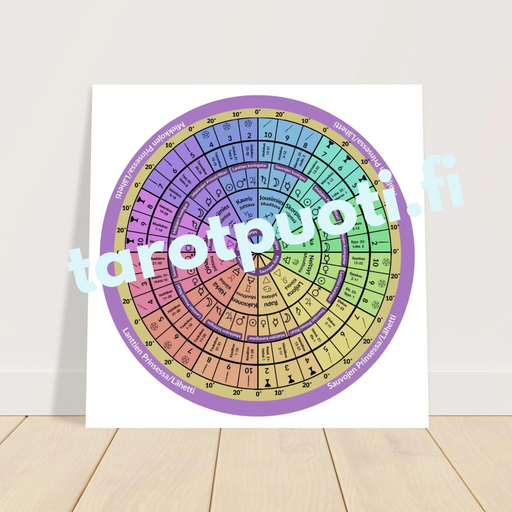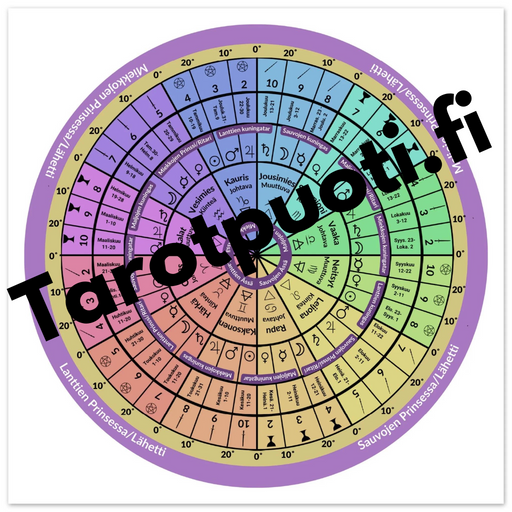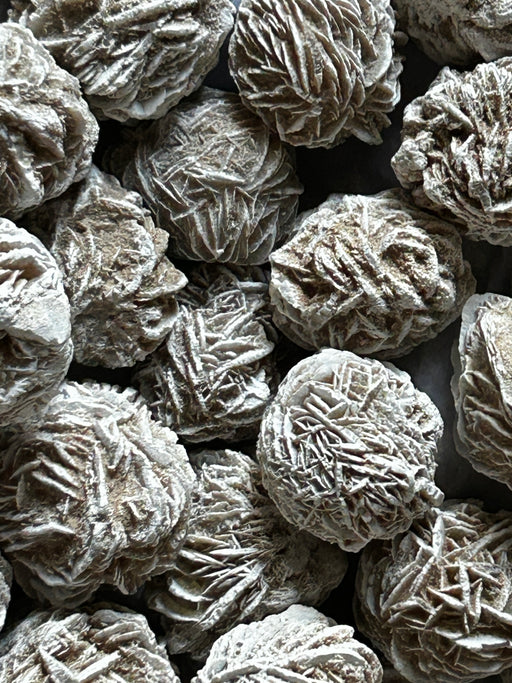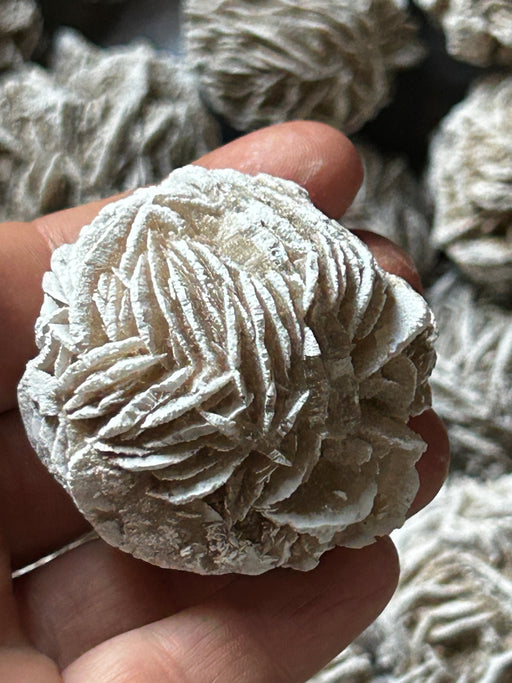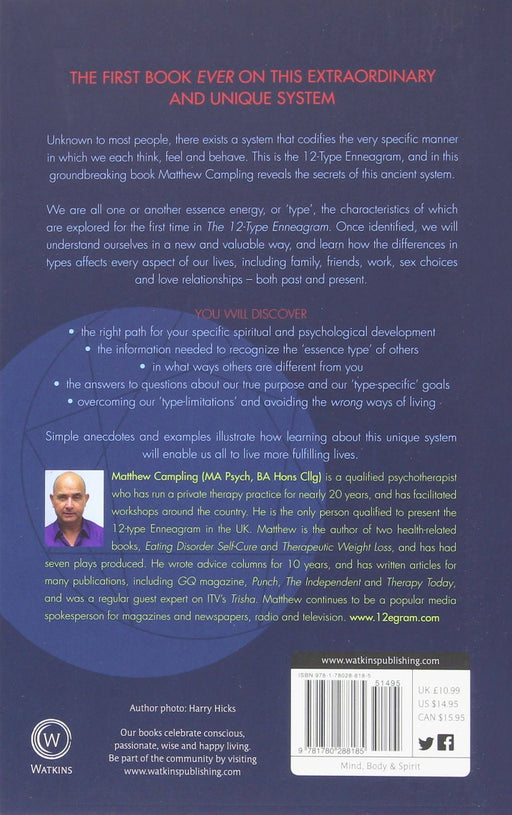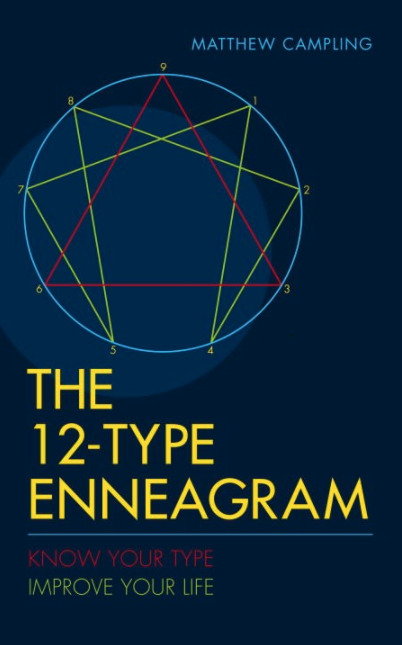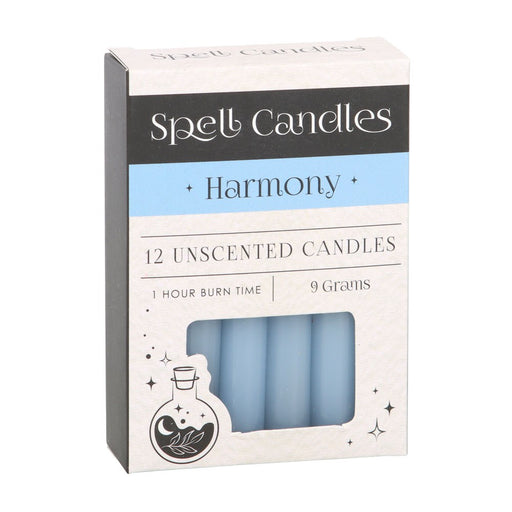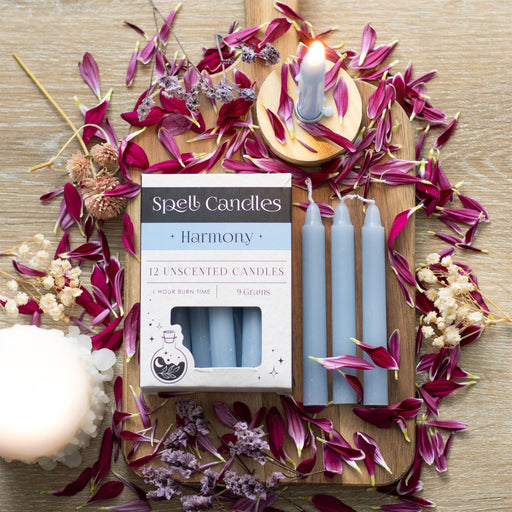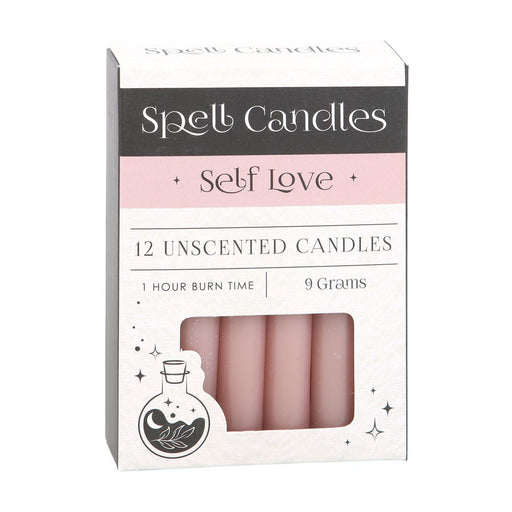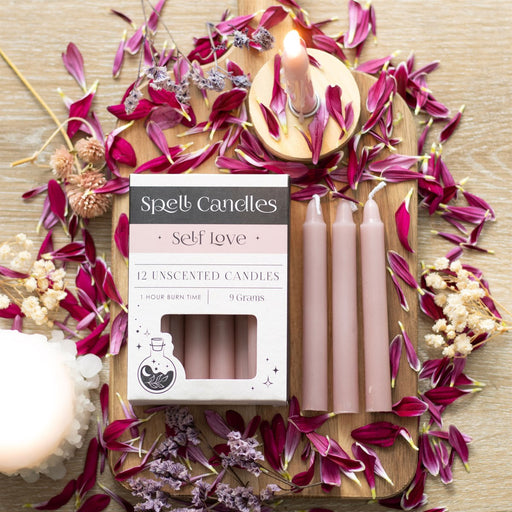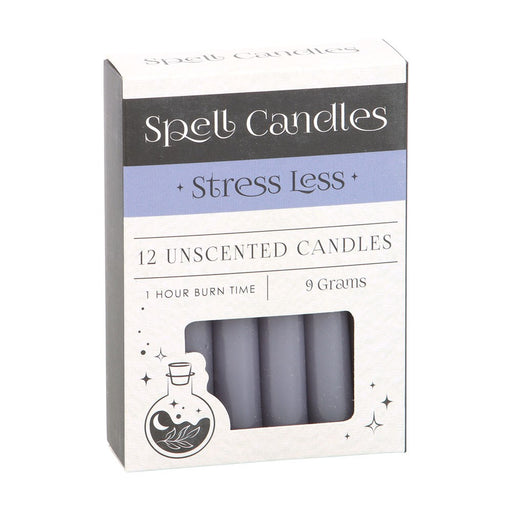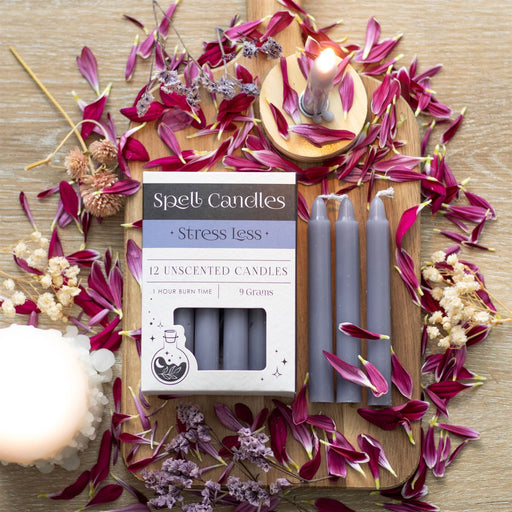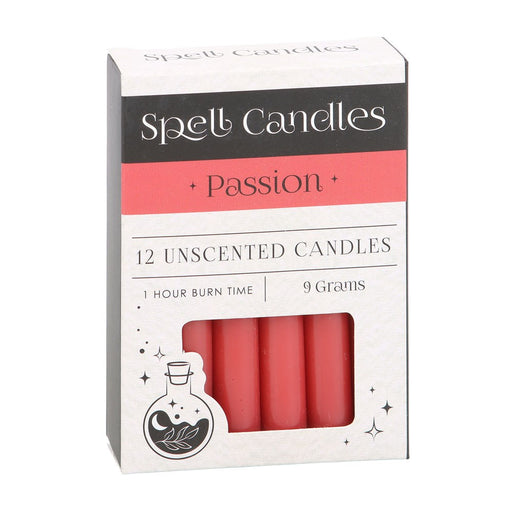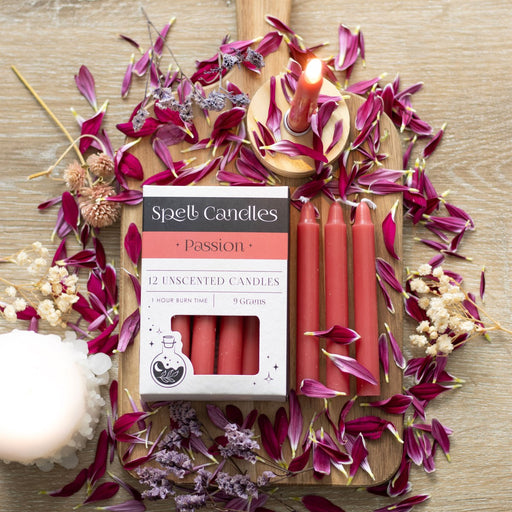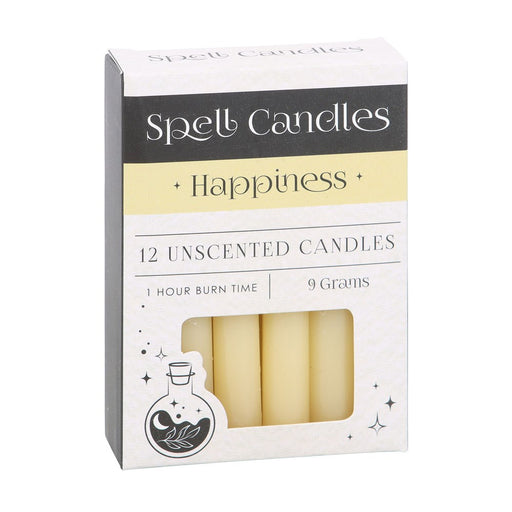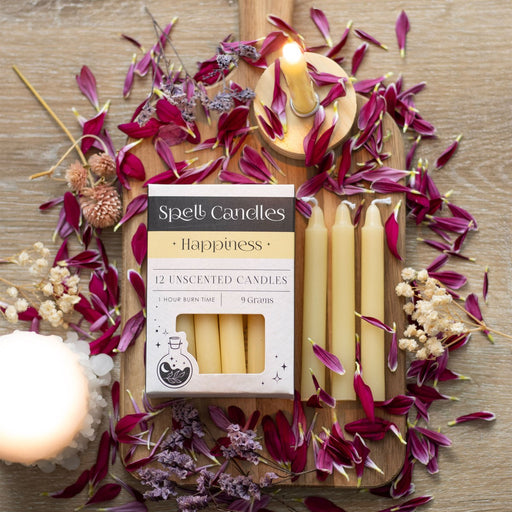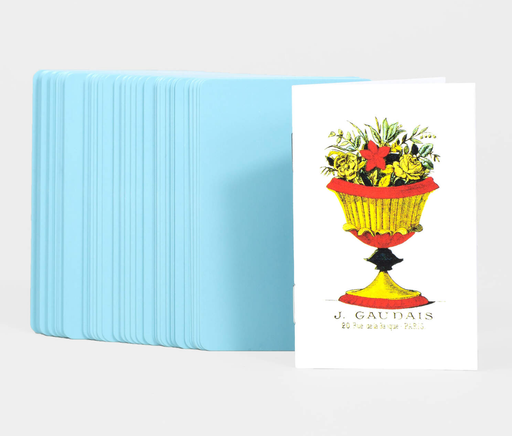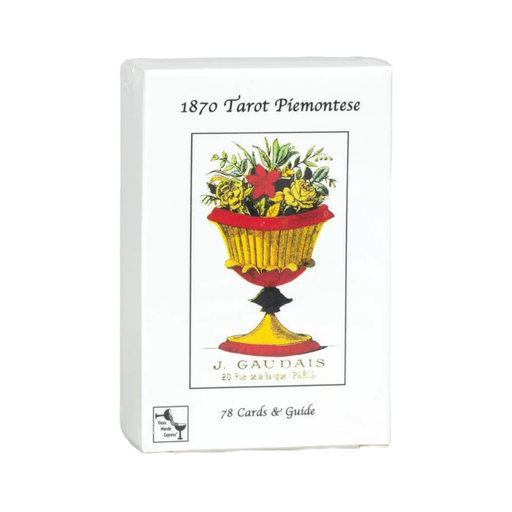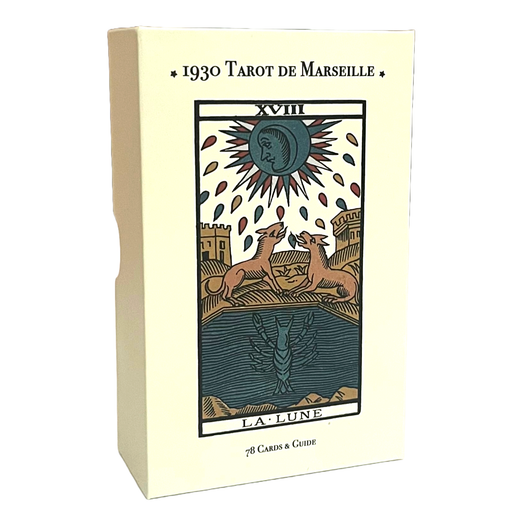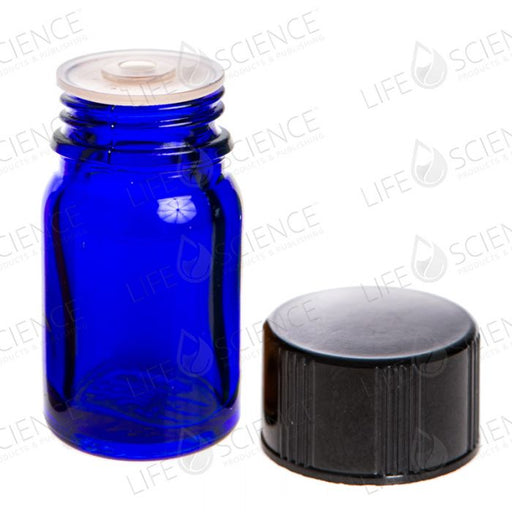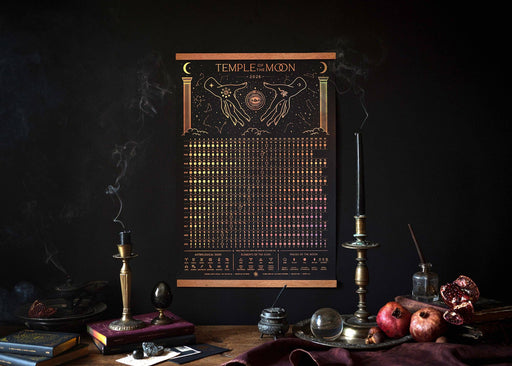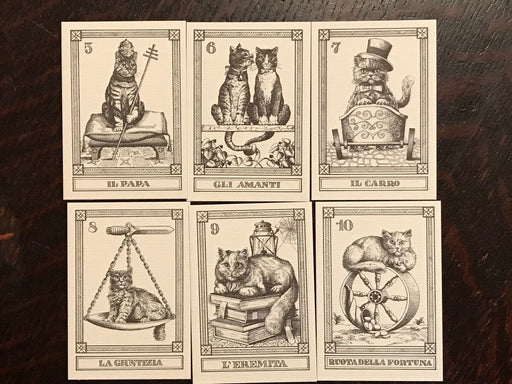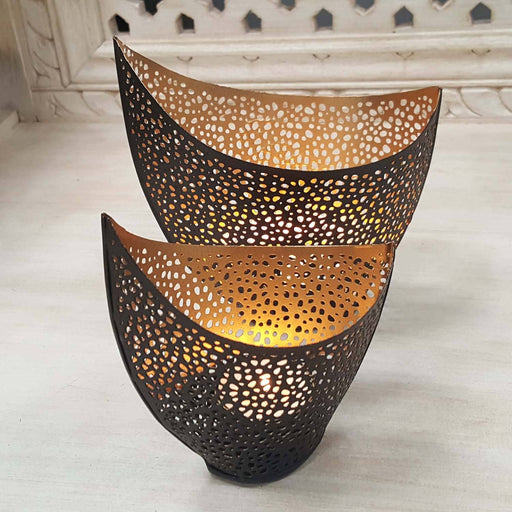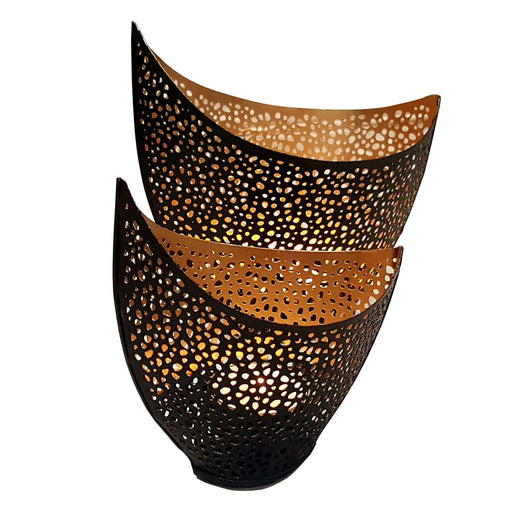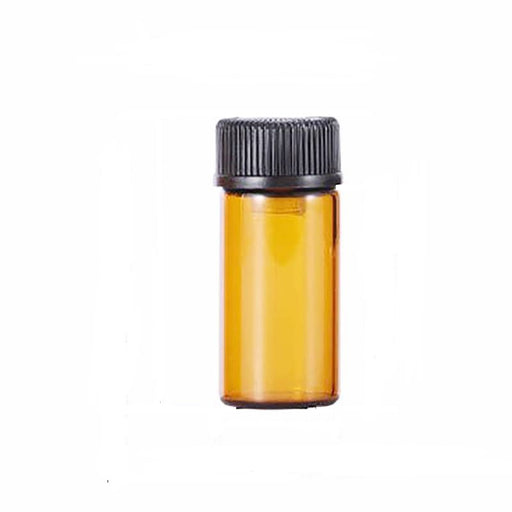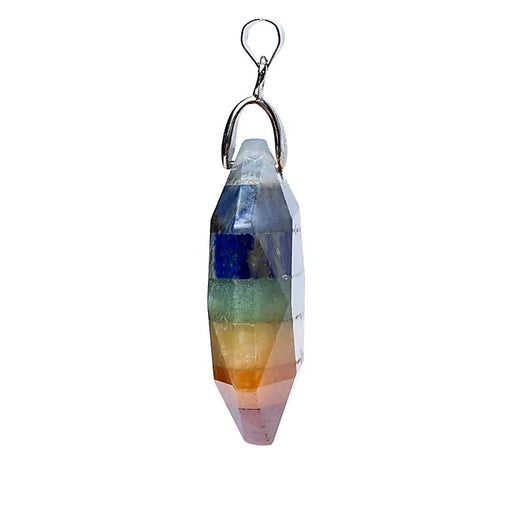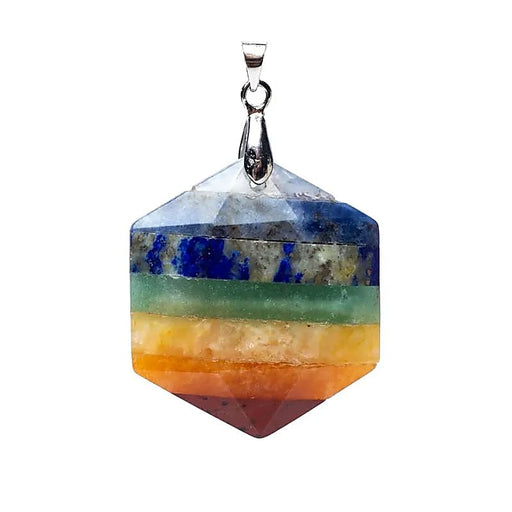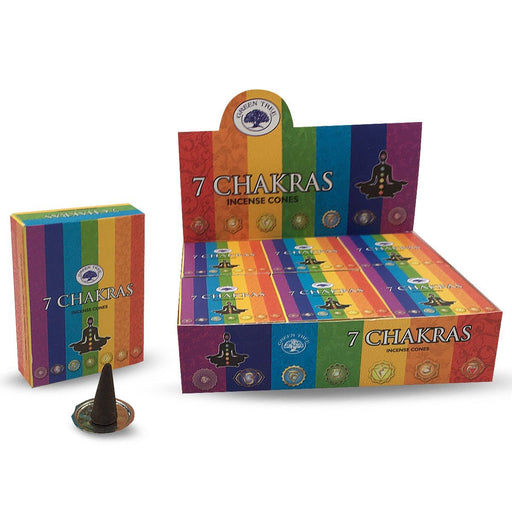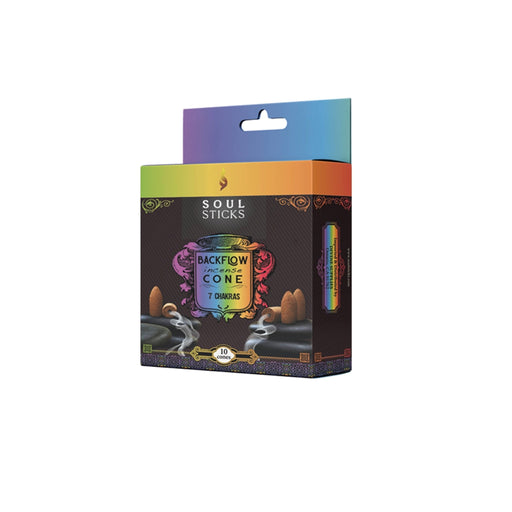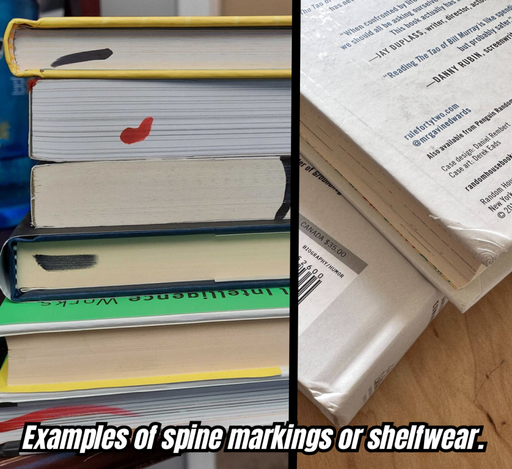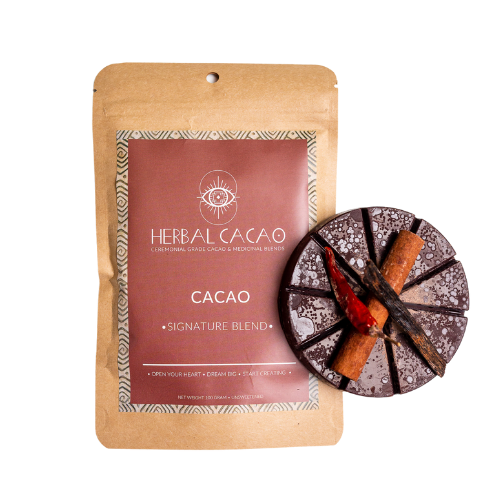Viktig information om "out of stock"-produkter
Produkter
Filter
"Decan walk" - Tarot vuodenpyöräjuliste 30x30cm
Tarotpuoti PublishingProdukten är på finska.Översatt Tarot årshjul. Genom att använda detta årshjul kan du följa året ur tarotkortens och astrologins perspektiv. Kval...
Se mer"Desert Rose" aavikkoruusu n 4-6cm Meksiko
TarotpuotiCHAKRA: Solar Plexus COUNTRY: Mexico A desert rose is formed when sand, water and wind combine over time to form beautiful rosettes. These stone...
Se mer1 ml metalli koboltin sininen pullo tippalukolla (12-pack)
Life & Science1 ml koboltblå metallisk glasflaska med droppkork (12 st per förpackning) Dessa eleganta koboltblå glasflaskor är det perfekta valet för att förvar...
Se mer1 ml metalli koboltin sininen pullo tippalukolla (12-pack) YL logolla - Young Living
Life & ScienceSprid budskapet om Young Living eteriska oljor genom att ge andra chansen att prova eteriska oljor själva med dessa vackra, högkvalitativa glasbehå...
Se mer10 Oils to Help You Own a Successful Mindset - Gretchen King-Ann M.B.A.
Gretchen King-Ann M.B.A.Att dela en populär Young Living-produkt kan kännas naturligt, men du kan stöta på hinder längs vägen. Det är svårt att veta vad man inte vet. Att ...
Se mer10 Secrets for Success and Inner Peace – Dr. Wayne W. Dyer
Dr. Wayne W. DyerDr. Wayne Dyer påminner i sin nya bok att materiell framgång inte är vårt slutgiltiga mål, utan att vi bör hitta inre frid och framgång med hjälp a...
Se mer10-Minute Crystal Ball: Easy Tips for Developing Your Inner Wisdom and Psychic Powers - Skye Alexander
Skye AlexanderSpråk: engelska 10-Minute Crystal Ball är en praktisk guide som erbjuder över 400 tips och tekniker för att utveckla din inre visdom och psykiska ...
Se mer101 Secrets of the Freemasons: Behind the Mysterious Society - Barb Karg
Barb Karg101 hemligheter om frimurarna: Bakom det mystiska sällskapet – Barb Karg Engelskspråkig. Denna bok erbjuder en djupgående inblick i frimurarnas mys...
Se mer11.11 Oracle: Answers to Uplift and Shift - Alana Fairchild
Alana Fairchild11.11 Oracle: Answers to Uplift and Shift – Alana Fairchild 11.11 Oracle on opas numeroviestien tulkitsemiseen ja tietoisuuden uudelleenkalibrointi...
Se mer12-Type Enneagram: Know Your Type, Improve Your Life - Matthew Campling
Matthew CamplingSpråk: engelska 12-Type Enneagram: Know Your Type, Improve Your Life introducerar en ny, astrologiinspirerad metod för enneagrammet. Vanligtvis ide...
Se mer12kpl Light Blue Harmony loitsukynttilä
Tarotpuoti ImportFörpackning med 12 ljusblå trollformelljus som används i ritualer för att locka fram harmoni och balans. Ljustrollformler är en av de enklaste tekn...
Se mer12kpl Pink Self Love loitsukynttilä
Tarotpuoti ImportFörpackning med 12 rosa trollformelljus som används i ritualer för att attrahera självkärlek, tacksamhet och självförtroende. Ljusmagi är en av de ...
Se mer12kpl Purple Stress Less loitsukynttilä
Tarotpuoti ImportFörpackning med 12 lila färgade trollformelljus som används i ritualer för att lindra stress och ångest. Ljusmagi är en av de enklaste teknikerna f...
Se mer12kpl Red Passion loitsukynttilä
Tarotpuoti ImportFörpackning med 12 röda trollformelljus som används i ritualer för att locka passion och kärlek. Ljusmagi är en av de enklaste teknikerna för troll...
Se mer12kpl Yellow Happiness loitsukynttilä
Tarotpuoti ImportFörpackning med 12 gula trollformelljus som används i ritualer för att attrahera lycka och positivitet. Ljusmagi är en av de enklaste teknikerna fö...
Se mer150 Uses: Fast and Fabulous
Life & Science publishing!! MED YOUNG LIVING VITALITY OILS!! Denna resurs kommer att hjälpa dig att förstå hur man använder Young Living Essential Oils. 150 Uses Fast and...
Se mer15ml koboltin sininen pullo tippalukolla YL logolla 5kpl - Young Living
Life & ScienceSprid budskapet om Young Living eteriska oljor genom att ge andra chansen att prova eteriska oljor själva med dessa vackra, högkvalitativa glasbehå...
Se mer15ml vihreä pullo tippalukolla YL logolla 5kpl - Young Living
Life & ScienceSprid budskapet om Young Living eteriska oljor genom att ge andra chansen att prova eteriska oljor själva med dessa vackra, högkvalitativa glasbehå...
Se mer16mm Digital Metallic Dice Set (3 Options): Green with Blue
FanRoll by Metallic Dice GamesUppgradera din spelupplevelse! Tillverkade av äkta zink och belagda med glänsande, polerad nickel, dessa 16 mm metalltärningar är tunga i handen oc...
Se mer1870 Tarot Piemontese & Guide | Made in USA |
Vieux Monde1870 Tarot Piemontese & Guide Denna tarotlek är ursprungligen producerad av den kända parisiska korttillverkaren J. Gaudais år 1870. Leken består a...
Se mer1930 Tarot de Marseille & Guide | Made in USA |
Vieux Monde1930 Tarot de Marseille & Guide (Stor storlek) Denna historiska Tarot de Marseille-kortlek har restaurerats baserat på den ursprungliga versionen t...
Se mer1st edition. Nordic Forest Rituals Oracle Cards - inspiroivat suomalaiset rituaalikortit- Reetta Ranta
Reetta Ranta49 kaunista korttia suomalaisesta metsästä ja kansanperinteestä Korttien aiheena on suomalainen metsä: sen puut, kasvit, henget ja eläimet, sekä ni...
Se mer2 ml metalli koboltin sininen pullo tippalukolla (12kpl paketti)
Life & ScienceSprid ordet om Young Living eteriska oljor genom att ge andra chansen att prova eteriska oljor själva med dessa vackra, högkvalitativa glasbehållar...
Se mer2000 vuotta sitten - Francisco Candido Xavier
Francisco Candido XavierTässä Francisco Cândido Xavierin meediokyvyn välityksellä kirjoitetussa teoksessa Emmanuel (Henki) kuvaa yhtä aikaisempaa ruumiillista elämään...
Se mer2026 Temple of the Moon - juliste (Limited Edition )
Magic of I.Temple of the Moon – seinäkalenteri (rajoitettu erä) Temple of the Moon on pieneräinen, korkealaatuinen seinäkalenteri, joka on suunniteltu kuun ku...
Se mer22 Arcani I Gatti - Il Meneghello Edizione
Il Meneghello22 Arcani I Gatti - Cats Tarot – Osvaldo Menegazzi 22 Arcani I Gatti är en charmig tarotlek designad av mästaren Osvaldo Menegazzi år 1990, som b...
Se mer2kpl itämaisia lyhtyjä Kanja-tuikkukynttilänjalkoja
Casa MoroCharmigt orientaliskt ljusstakeset "kanja" i marockansk stil. De är målade svarta på utsidan och ser gammaldags gyllene ut på insidan, vilket ger d...
Se mer30 ml lasipullo vihreä Young Living painatuksella /kpl
Tarotpuoti Import30 ml glasflaska med standard DIN18 gänga (de flesta eteriska oljeflaskor använder denna gänga) innehåller korken Utmärkt t.ex. för egna blandninga...
Se mer30cm All Seeing Eye Kyltti
Something Different WholesaleHauska ja värikäs All Seeing Eye -kyltti auttaa pitämään ei-toivotut energiat loitolla. Kyltissä on moderni silmäkuvio sekä teksti "Check your ener...
Se mer36 Secrets: A Decanic Journey through the Minor Arcana of the Tarot - T.Susan Chang
T.Susan Chang36 hemligheter: en dekanisk resa genom Tarots Minor Arcana - T. Susan ChangSpråk: engelska Detta verk utforskar de dolda sambanden mellan Tarots mi...
Se mer360 Degrees of Your Star Destiny: A Zodiac Oracle - Ellias Lonsdale
Ellias Lonsdale360 grader av ditt stjärnöde: ett zodiakorakel - Ellias LonsdaleSpråk: engelska Den här boken ger en djupgående guide till att utforska det astr...
Se mer3ml Mini eteeristen öljyjen pulloa 5kpl setti
Tarotpuoti5-pack set med små flaskor för eteriska oljor. Volym 3ml Mått 3,5 cm x 1,5 cm
50 vuotta myöhemmin - Francisco Candido Xavier
Francisco Candido XavierEräänä aamuna vuonna 131 jKr. joukko jänteviä orjia tunkeutuu Smyrnantorilla parveilevien ihmisjoukkojen läpi kantaen aikakauden maun mukaisesti ko...
Se mer60s Patchouli suitsuketikku 15g - Satya
Satya'60s Patchouli rökelsepinne 15 g - Satya Satya 60s Patchouli rökelse erbjuder en nostalgisk doftupplevelse som tar dig tillbaka till 1960-talets bo...
Se mer7 chakra hexagonal riipus
Tarotpuoti ImportHöjd 3cm Hexagonalt chakrahänge tillverkat med följande ädelstenar: AmetistSodalitLapis LazuliGrön AventurinGul JaspisRöd aventurinRöd jaspis. Ölje...
Se mer7 Chakra Sage Smudge Suitsuke 15g- Green Tree
Green Tree7 Chakra Sage Smudge rökelsepinne Paketet innehåller 20 rökelsepinnar som brinner i cirka 30 minuter. Tillverkad för hand i Indien med respekt för...
Se mer7 Chakras kartiosuitsuke - 10 kartiota
Elements7 Chakras konrökelse - 10 koner 7 Chakras -konrökelse erbjuder en tematisk doftupplevelse som stödjer öppnandet och balanseringen av chakran. Chakr...
Se mer7 Chakras takaisinvirtaus suitsukartio 10kpl - Soul Sticks
Soul SticksSoul Sticks Backflow -konerökelse Soul Sticksin Backflow-konerökelse är speciellt utformade för att skapa tjockare rök som flödar nedåt istället fö...
Se mer78 Acts of Liberation : Tarot to Transform Our World - Lane Smith
Lane SmithBoken är på engelska. Mjukband, 288 sidor. Guide till att läsa tarotkort som en gnista för gemenskapens engagemang och samhällsförändring. "Ett fy...
Se mer90 Days to Learning the Tarot - Lorri Gifford
Lorri Gifford90 dagar till att lära sig tarot - Lorri Gifford Produktens språk: Engelska Lorri Gifford i 90 Days to Learning the Tarot är ett omfattande 90-daga...
Se merA Barefoot Doctor's Guide for Women - Georgette Delvaux
Georgette Delvaux'En barfotaläkares guide för kvinnor – Georgette Delvaux' Språk: engelska Denna guide erbjuder praktiska och naturliga självvårdsmetoder för kvinno...
Se merA Biblical Perspective on Essential Oils - Teri Secrest
Teri SecrestEn biblisk syn på eteriska oljor - Teri Secrest Produktens språk: Engelska Teri Secrest i A Biblical Perspective on Essential Oils leder läsaren in...
Se merA Big Stink: A Tale of Ardor and Odor - Edward H. Kafka-Gelbrecht
Microcosm Publishing & DistributionKieli: englanti A Big Stink: A Tale of Ardor and Odor on humorilla höystetty kirja, joka yhdistää sanaleikit ja pieruhuumorin hauskalla tavalla. Ki...
Se merA Charming Touch of Tarot - Melissa Holtz
Melissa HoltzTuotteen kieli: englanti A Charming Touch of Tarot – Melissa Holtz Ystävyyttä, taikuutta ja vaarallisia salaisuuksia yhdistävä jännittävä romaani. ...
Se merA Collection of Writings Related to Occult, Esoteric, Rosicrucian and Hermetic Literature, Including Freemasonry, the Kabbalah, the Tarot, Alchemy and Theosophy Volume 2 - Manly P. Hall
Manly P. HallEn samling av skrifter relaterade till ockult, esoterisk, rosenkreuzisk och hermetisk litteratur, inklusive frimureri, kabbala, tarot, alkemi och t...
Se merA Confluence of Witches: Celebrating Our Lunar Roots, Decolonizing the Craft, and Reenchanting Our World - Casey Zabala
Casey ZabalaA Confluence of Witches: Celebrating Our Lunar Roots, Decolonizing the Craft, and Reenchanting Our World (engelskspråkig) "A Confluence of Witches"...
Se merA Course in Tarot - Eleanor Hammond
Eleanor HammondDjupgående träning, övningar, frågor med svar. Tarot ger exakt insikt i känslor, livshändelser, relationer, karriär och ekonomiska frågor, familjes...
Se merA Critical Introduction to Tarot: Examining the Nature of a Belief in Tarot - Simon Kenny
Simon KennyHur fungerar Tarot? Varför är det så populärt idag? Är det bara för spåmän? Tarot har sett en nyligen ökning i intresse som förtjänar en förklaring...
Se mer
